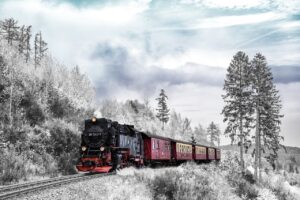Introduction Section
In life, as we gain more responsibilities, we tend to have trouble balancing all of them. At some point, there will be a time where it is just too much trouble. However, those moments are meant to happen at some point. Those moments are meant to indicate to us that we need help balancing all of these responsibilities. One of the main methods to help with that is to create a schedule.
Now, a schedule can help us visually track everything down. However, there are still odd moments where there are too many things planned within a certain hour, day, or maybe even a week. If this is the case, then please consider following the checklist to maintain a comfortable schedule below. As a note to keep in mind, a comfortable schedule varies between person to person. While this checklist can apply to everyone, anyone can take different approaches to the following points.

1. List everything you plan on doing
Before you create a schedule, you should list everything you plan on doing ahead of time. This not only gives you the benefit of hindsight, but allows you to coordinate your events and see if there are any conflicts between those events. Of course, there are times where you can’t fit everything into your schedule. Because of those situations, it’s not a bad idea to list everything you might do before you officially try to perform them.

2. Set up a priority system
After listing everything, try organizing your list from what’s most important to what’s least important. As mentioned earlier, there could be cases where you can’t fit everything into your schedule. As a starting point, your most important things to do could range from your job and/or school, exercising, to attending special family events. While, on the other hand, your least important things could range from going to a recreational place, shopping, to attending social events in general. By setting up your priorities, it’s easier to pinpoint your more important events first.

3. Consider any transportation you will take to get to those places
While it’s fun to do more exciting things, there is the issue of how you will get to those places. If your fun plan is at your home, then it’s incredibly easy to fit it to your schedule. However, when it comes to events that take place far away, it’ll certainly become more difficult. For example, if it takes 30 minutes to get to an event from your home, you’ll have to consider that 30 minutes to get there AND the 30 minutes to get back.
Tip: If you plan on going to a far place, then consider doing other things on your way to that event. On the way to that one event, you can do other things for fun and/or are needed. When it comes to transportation, you can get to most places. It’s something you can take advantage of in a responsible matter.

4. Leave some space for time to relax, eat, and for cases when something unpredictable happens
On top of considering transportation, there are times where you need to relax, eat, and respond to emergencies. From time to time, you’ll need to relax, eat, and in some cases, deal with unexpected tasks.
When it comes to relaxing, especially sleeping, and eating, these are the times where you can take a break. Especially when you have a lot of things to do, your schedule can get very stressful. Taking the time to relieve yourself by relaxing and eating, can allow you to recharge and perform better. Sometimes, it’s best to go slower than perform without stopping.

While you can’t exactly plan for unexpected things, it’s best to be flexible when those things do happen. While you can’t exactly foresee the unexpected ahead of time, you can make a plan to respond to it. For example, you cannot exactly plan to have a flat tire like in the picture below, but you can free some time in your schedule for unexpected moments like those.

5. Set reminders for the important events/deadlines ONLY
After considering the previous points, you can create a comfortable schedule that works for you. However, as humans, we can all make mistakes from time to time and forget things. As mentioned earlier, a schedule can help you visually track everything down, but there are those times where you’ll forget some of those things you’ve put in your schedule. Because of that, it’s not a bad idea to set yourself reminders for important events. Especially when you’d like to value other people’s time, a reminder can help you prepare ahead of time. While you don’t necessarily need reminders for every event where you may not get penalized for forgetting, setting reminders can help remind you of upcoming events.

Of course, after following this checklist, it’s just a matter of becoming comfortable and developing a habit with the schedule. At the beginning, it may be difficult to handle all the changes. However, as you get used to your responsibility and develop a flow in your schedule, your life may go in smooth sailing. A comfortable schedule will vary between different people, but at some point, you can be comfortable with your own schedule. With that, I wish you the best of luck on creating a comfortable schedule for yourself and hopefully consider this checklist!


